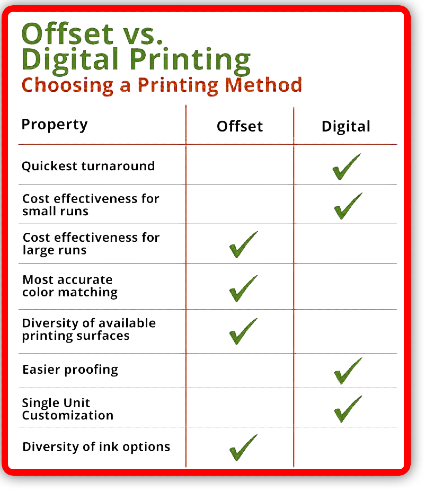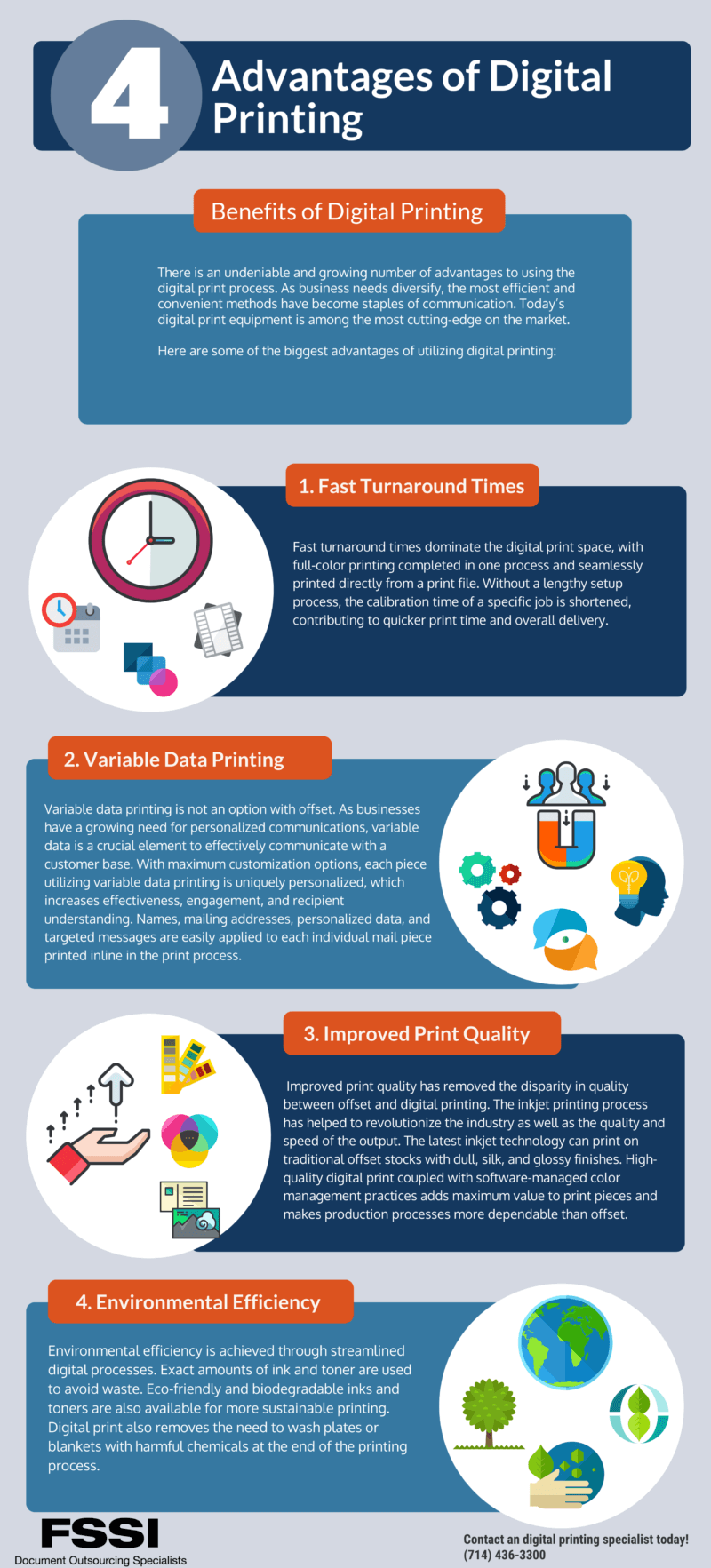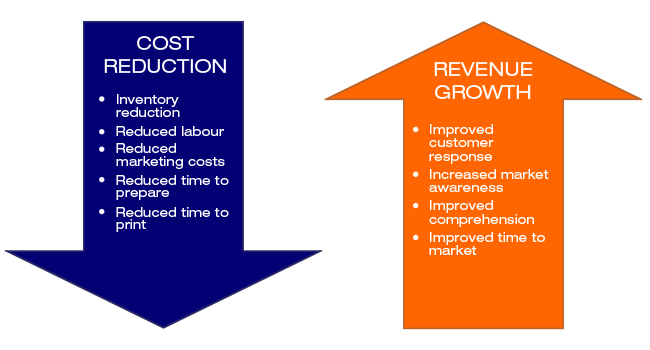Indicators on Digital Printing You Should Know
Indicators on Digital Printing You Should Know
Blog Article
How Digital Printing can Save You Time, Stress, and Money.
Table of ContentsDigital Printing Fundamentals ExplainedDigital Printing Things To Know Before You BuyDigital Printing Can Be Fun For AnyoneDigital Printing Fundamentals ExplainedEverything about Digital PrintingOur Digital Printing PDFs
Variable information printing, such as direct mail with customized codes and addresses, is ideally suited for digital printing. Digital fast printing just requires four actions of design, testimonial, printing and binding to get every little thing done. Digital quick printing has an unparalleled advantage: print on demand.According to PMMI, electronic printing allows brand names and producers to respond rapidly to consumer demands while improving the supply chain, reducing warehousing cost and waste, and taking pleasure in faster time to market. That all noises terrific, but just how does this technology do all that? The significant differentiator of these modern technologies is that there are no set up fees and no plates with electronic printing.
Digital Printing Things To Know Before You Buy
This results in quicker turn-around time and lowers cost when utilizing digital printing.
Rapid production indicates getting your item to market quicker. It additionally indicates it's easier and faster to make modifications later, when you transform a recipe, add a SKU, or create seasonal product packaging. Digital printing is highly flexible, so it's easy to make adjustments to the bundle style swiftly. Everything returns to the plates.
With traditional printing approaches, short-run printing is simply not feasible. Due to the fact that a wonderful layout can make or break your item, digital printing consistently creates top notch, clear and colorful graphics each time.
Digital printing is the process of printing digital-based images directly onto a variety of media substrates. There is no need for a printing plate, unlike with offset printing. Digital files such as PDFs or desktop computer publishing data can be sent out directly to the digital printing press to print on paper, image paper, canvas, material, synthetics, cardstock and other substratums.
All About Digital Printing
According to PMMI, electronic printing enables brands and makers to react rapidly to client needs while boosting the supply chain, reducing warehousing price and waste, and appreciating faster time to market. That all sounds excellent, but how does this technology do all that? The major differentiator of these modern technologies is that there are no set-up charges and no plates with digital printing.
This results in quicker turnaround time and lowers expense when making use of discover this electronic printing.

What Does Digital Printing Do?
More inventory can suggest even more waste later on. With traditional printing techniques, short-run printing is simply not possible. Due to the fact that a wonderful layout can make or break your item, digital printing continually produces top quality, clear and colorful graphics each time. Digital printing on versatile bags adds the bright, dynamic, and accurate graphics that almost beckon consumers to get to out and touch them.

According to PMMI, digital printing permits brands and makers to react swiftly to consumer needs while boosting the supply chain, lowering warehousing cost and waste, and enjoying faster time to market. That all audios fantastic, yet just how does this modern technology do all that? The significant differentiator of these innovations is that there are no set up fees and no plates with electronic printing.
A Biased View of Digital Printing
According to Wikipedia, the greatest difference between electronic printing and conventional methods such as lithography, flexography, gravure, or letterpress is that there is no need to replace printing plates in digital printing, whereas in these analog printing techniques home plates are repetitively changed. This results in quicker turnaround time and lowers cost when making use of digital printing.
Fast manufacturing suggests getting your item to market much faster. It also implies it's simpler and faster to make adjustments later on, when you transform a recipe, include a SKU, or create seasonal packaging. Digital printing is very flexible, so it's simple to make modifications to the package layout rapidly. It all goes back to the plates.

Not known Incorrect Statements About Digital Printing
Digital printing is the procedure of printing digital-based images directly onto a range of media substrates. There is no demand for a printing plate, unlike with balanced out printing. Digital documents such as PDFs or desktop computer publishing data can be sent out directly to the electronic printing machine to publish on paper, picture paper, canvas, material, synthetics, cardstock and other substrates.
Report this page